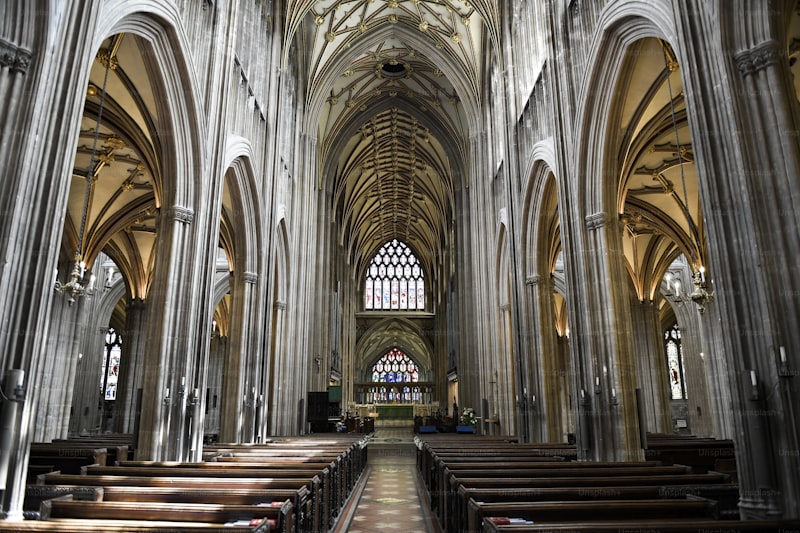Exploring Cathedral Veils and Cultural Traditions: A Symbol of Grace and Heritage
Introduction to Cathedral Veils
Cathedral veils have long been an emblem of elegance and rich cultural history. These delicate pieces of fabric, typically worn by brides or during significant religious ceremonies, embody both beauty and tradition. In this article, we will delve into the fascinating world of cathedral veils, examining their origins, cultural significance, and how they continue to impact contemporary fashion and customs.
The History of Cathedral Veils
The use of veils can be traced back to ancient civilizations, where they served not only as a fashion statement but also as a symbol of modesty. The cathedral veil, or "wedding veil," became particularly popular during the Middle Ages.
Traditionally, this type of veil is longer than standard veils, often extending beyond the bride's train or the length of her gown. This length symbolizes purity and the transition into a new stage of life. Let's take a closer look at the historical timeline of cathedral veils:
| Era | Significance |
| Ancient Times | Veils as a symbol of modesty and social status |
| Middle Ages | Catholic brides wearing long veils to signify purity |
| Renaissance | Veils became decorative pieces, sometimes adorned with jewels |
| Modern Era | Cathedral veils as contemporary bridal fashion statements |
Cultural Significance of Cathedral Veils
Across cultures, veils have been imbued with various meanings and practices. The cathedral veil, in particular, is rich in symbolism. In many cultures, wearing a veil is associated with the idea of protection, whether it be from outside influences or a signifier of respect toward religious beliefs and traditions.
In Christianity, for example, veils were traditionally used during Mass as a sign of reverence. Similarly, in Jewish tradition, brides often cover their faces with a veil to symbolize modesty as they enter into marriage.
Similarly, in Islamic cultures, women may wear hijabs or other forms of veils for modesty, with each garment reflecting both personal and cultural identity.

Modern Interpretations and Trends
Today, cathedral veils are often viewed as both a fashion accessory and a cherished tradition. Designers have begun to infuse modern styles into these classic pieces, allowing brides to express their individuality while honoring tradition. From lace embroidery to floral appliqués, contemporary cathedral veils can be personalized to fit various wedding themes and styles.
Brides may opt for cathedral veils that feature intricate beadwork or sheer fabric for a modern touch, creating a beautiful juxtaposition between tradition and contemporary style. The combination of traditional elements and modern design has made cathedral veils a popular choice for many brides, regardless of their cultural background.
Choosing the Perfect Cathedral Veil
When selecting a cathedral veil, there are several factors to consider to ensure that it complements your wedding attire and personal style:
- Length: Cathedral veils vary in length from 108 inches to 120 inches or more. Consider the length of your dress and the style of your wedding when choosing the perfect veil.
- Material: Light fabrics like tulle or chiffon create a soft, romantic look, while heavier fabrics like satin or lace provide a more structured appearance.
- Embellishments: Whether you prefer simple elegance or intricate detailing, the veil can be a canvas for your personal style. Consider embellishments that reflect the overall theme of your wedding.
- Color: While most brides stick to classic white or ivory, colored veils can make a bold statement and bring an entirely new element to your bridal look.
Once you have chosen the ideal cathedral veil, consider how to effectively style it with your hair and bridal accessories. An experienced hairstylist can help create the perfect hairstyle that complements the veil, ensuring that the overall look is cohesive and stunning.
Cathedral Veils in Different Cultures
As previously mentioned, cathedral veils are not limited to one particular culture or tradition. Here, we explore how different cultures incorporate veils into their bridal ceremonies:
Western Cultures
In Western weddings, cathedral veils are typically worn during religious ceremonies and receptions. The veil is often lifted by the groom during the wedding ceremony as a symbolic act to signify his acceptance and unveiling of the bride’s beauty.
Eastern Cultures
In many Eastern cultures, veils are also central to bridal fashion, albeit with distinct styles. For example, in Indian weddings, brides wear a Dupatta — a long scarf that covers the head and shoulders, often adorned with intricate embroidery. This practice signifies modesty and reverence for tradition.
Middle Eastern Cultures
In the Middle East, traditional garments may involve ornate veils like the Hijab or Niqab, which serve both religious purposes and social significance. These pieces are often colorful and beautifully designed, reflecting the wearer’s personality and cultural heritage.
Conclusion: Embracing Cathedral Veils and Their Cultural Richness
Cathedral veils serve as a timeless representation of tradition and beauty across various cultures. As we’ve explored throughout this article, their historical significance, modern interpretations, and cultural variations show the depth and richness of this elegant accessory.
When considering a cathedral veil, think about how it aligns with your personal style and the cultural heritage you wish to honor. Whether you choose a classic design or a modern twist, remember that your veil is not just a piece of fabric — it is a reflection of your journey and identity.
Ultimately, as you weigh your options, embrace the beauty of cathedral veils in your own unique way, allowing their elegance and symbolism to enhance your special day.
In summary, cathedral veils are not only fashion items but also carry a wealth of tradition and meaning. Whether you are planning a wedding or exploring cultural practices, understanding the significance of cathedral veils can enrich your experience and connection to the festivities.